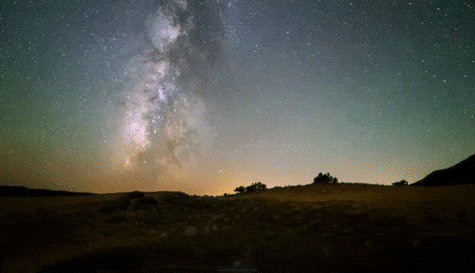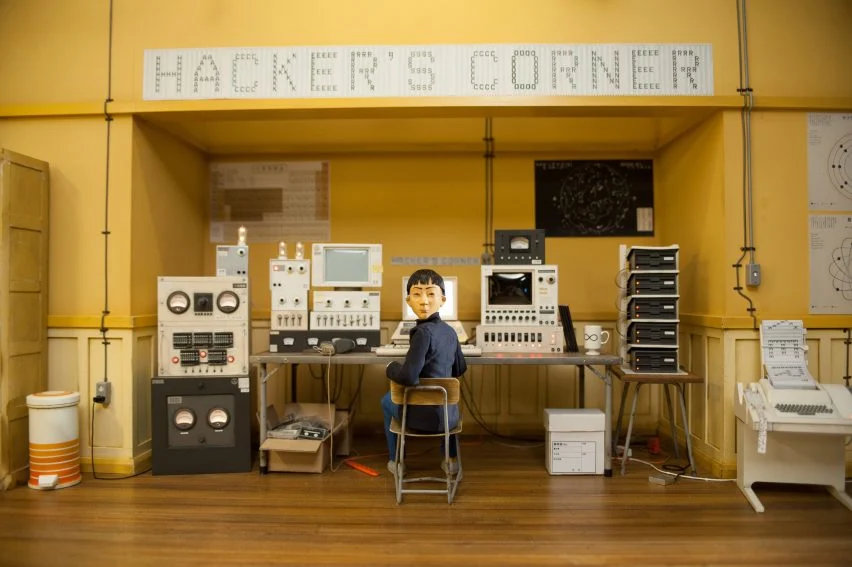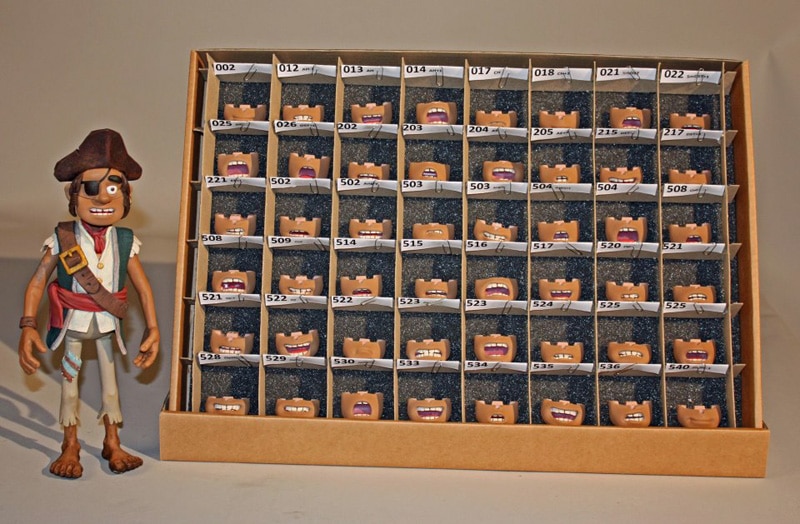As you now know, a film shot with a camera is nothing more than a succession of photographic images.
From there, you can imagine playing with a camera to create images that would be impossible to achieve with a camera.
Timelapse
Filming a sky full of clouds is all very well, but if you shoot it at normal film speed, it's likely to be boring and very long!

But if, instead of taking 25 images in a second (as with a camera), you take just one every 2 minutes (with a still camera, for example), and then broadcast them at 25 frames per second, your film will last much less (50 times less), and suddenly become extraordinary.
In effect, we stop the motion and resume it later. In English, we"stop the motion", giving this technique the gentle name of stop-motion.
Here, the time between each image is so long that it has been given the peculiar name of timelapse: bits of time stuck together.
In Fantastic Fungi, Louie Schwartzberg films fascinating studio timelapses of mushrooms.
Pixilation
Now, what if, with the same technique, we managed what was happening in front of the camera ourselves?
You could, for example, photograph actors, then, once the photo has been taken, change the position of the actors, take another photo, move the actors again, take another photo, and so on.
We do more than just stop the movement: we manage everything ourselves.
This technique goes by the gentle name of pixilation (which has nothing to do with pixelation).
Here's a cult short film, Neighbours, made with this technique in 1952 by Norman MacLaren, which won him the Oscar for Best Short Film.
I can't resist referring you to another pixilation gem: PES's Submarine Sandwich.
And incredible artist Kevin Parry will tell you all about the secrets of this technique, as well as giving you a good laugh.
Making a stop-motion film
Let's go one step further: instead of using actors, why not use characters we've built ourselves?
But yes, with modelling clay for example?
As you can see, this is the technique used by Aardman Studios for Wallace & Gromit.
Here's Adam, one of their first Oscar-nominated short films, directed by Peter Lord, creator of Aardman Studios.
But how do they do it?
It's easier to explain than 3D, but it certainly doesn't take any less time to implement! Let's unpack!
1. Ideas and storyboard
As with any film, the first phase is obviously the research phase: finding the right idea, writing the script, drawing up the storyboard.
Then you have to set up the entire production process: who does what when, and at what price.
This phase is common to any film, but it's always worth remembering.
2. Set construction
Before you can animate characters, you have to create their environment to scale.

This means building all the sets in the scene down to the smallest detail, so that the scene becomes believable. Above, a scene from Wes Anderson's Isle of Dogs, in which the level of detail is very impressive.
3. Character development
Next, we have to build the characters, which must be animatable, as well as express emotions. This means building solid skeletons that can be moved without breaking, and planning all possible expressions in advance so you don't have to think about them when animating.

Here, for example, is a set of interchangeable mouths for the Aardamn studio film, The Pirates, Good for Nothing, Bad for Everything.
4. Lighting and cameras
Then, of course, you need to install the lighting, which must not flicker or change color during recording. Daylight, for example, is out of the question.
Subtle unplanned color changes can become very problematic, and as a scene can take several days to animate, this is a point not to be overlooked.
As for cameras, they are mostly fixed, but today, computers and robotics are creating miracles: we can program the camera's movement using small motors that control it on rails.
This technique is known as motion control: with each new frame, the camera moves exactly where you tell it to. This creates very fluid camera movements, which would have been very complicated to achieve by hand.
5. Animation
And finally comes the time for animation, in which each object is moved just a few millimeters to make the movements as fluid as possible.
And so that the animator can concentrate on what he can do, each object is structured in such a way that it can be manipulated efficiently. This is what we call the rig, the animatable skeleton of the object. This concept is also found in 3D animation.
A rig can structure a character, but also a sheet of paper that flies, a wave that moves, or a tree that quivers.
Here's a video describing the various stages mentioned above with the magnificent film Kubo and the Magic Armorby Travis Knight, produced by Studio Laïka. You can see the sets, lighting, motion-control camera and animated character.
6. Editing, mixing, music and sound effects
What's special about animated films is that the voices are often recorded before the film is made, so that the animations can be precisely matched to each voice.
Then, like 3D films, the photographed images are integrated with other images, colors are adjusted and effects are added during the compositing phase.
Finally, like any film, it has to be edited, combined with music and sound effects.
Once exported, all that's left is to enjoy it 🙂
And what about motion design?
As you can see, it's a technique used much more in the artistic than the commercial sphere. But a new wind is blowing through this technique, thanks to the trend towards handmade, and that unmistakable touch of emotion.
I know you're curious, so here are a few more films that use it:
- Mr. Jack's Christmas Carol by Henry Selick
- The Funeral Wedding by Tim Burton
- My Life as a Courgette by Claude Barras
- Fantastic Mr Fox by Wes Anderson
There are a few stop-motion commercials, but they are rare because of the budget, production times and expertise required to complete them.
We tried this technique on this production, by mixing reel and impossible. Without this technique, it would have bee difficult to render the initial idea.
Conclusion
Stop-motion requires time, money and expertise, and is not very applicable to motion design, but it's easy to imagine mixing the different techniques I've already mentioned on this blog (traditional animation, computer-assisted animation and 3D animation) and creating a truly different and original short film!
And you, have you ever tried to make objects move to tell a story 🙂 ?

Alexandre Soubrier is a freelance motion designer with a passion for illustration and animation. He created the podcast Exquises Exquisses in which he interviews author-illustrators, and produces this blog.
Contact him here or on Linked In.





